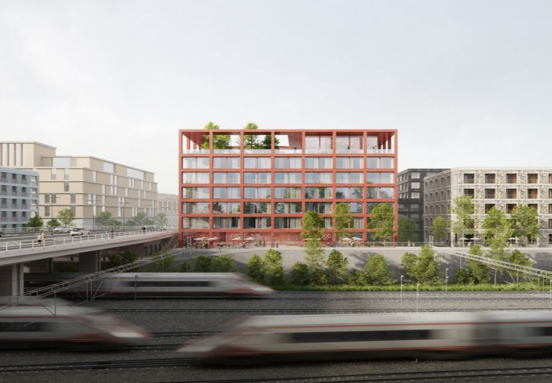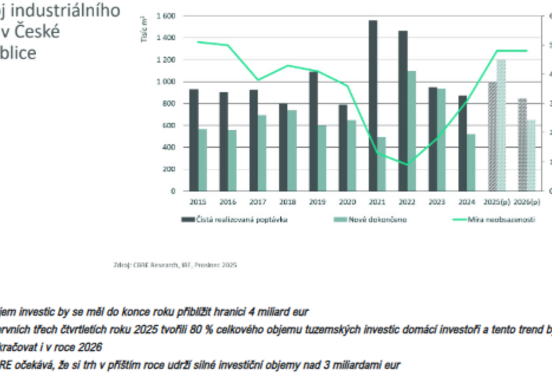Global Market Overview: A Foundation for Business Real Estate
Global markets saw gains in July, driven by a welcome reduction in trade friction, strong corporate profits, and supportive policy measures. This generally positive sentiment can foster greater business confidence, encouraging expansion and, consequently, an increased demand for commercial real estate, including both office and warehouse facilities. However, the decline in government bond markets, signaling potential interest rate shifts, introduces a critical cost factor for businesses considering real estate investments or long-term leases.
Regional Market Insights: Tailoring Your Real Estate Strategy
Europe: Navigating Mixed Signals for Premises
European stock markets recovered in July, with strong performance in the financial and energy sectors. Yet, the broader economic picture was mixed, as Eurozone GDP growth sharply decelerated, and key economies like Germany and Italy experienced declines. This suggests a cautious approach for businesses contemplating significant expansion in these core markets, possibly favoring more flexible office or smaller warehouse solutions. In contrast, Spain showed robust growth, and France surprised with moderate improvement, potentially indicating better opportunities for commercial real estate investment and expansion in these more dynamic markets. A key development was the EU-US trade agreement, which, while reducing some tariffs, also saw the EU commit to strategic purchases and investments in the US. This agreement could influence supply chain strategies, prompting businesses to reassess their European distribution hubs and the types of warehouse space required to adapt to new trade flows.
United Kingdom: Adjusting to Economic Headwinds
Despite a positive close for UK equities in July, the overall economic environment proved challenging. Rising inflation, driven by higher fuel and transport costs, coupled with a deteriorating labor market (increased unemployment, fewer job vacancies, slower wage growth), signals an economy facing significant headwinds. The Bank of England is under pressure, with market expectations leaning towards interest rate cuts later in the year. For businesses, this translates to a more cost-sensitive operational landscape. Companies might prioritize optimizing existing office and warehouse space, seeking more cost-effective locations, or deferring major expansion plans until economic stability improves. Efficiency in logistics and supply chain management becomes paramount in such an environment.
United States: Growth & Innovation Driving Demand
US equity markets outperformed global peers in July, fueled by optimism around tax reform and easing trade tensions. The economy grew at a strong annualized rate of 3% in Q2, with the technology sector leading gains, particularly benefiting from strong AI-related demand. This robust growth, especially in tech, signifies continued high demand for specialized office spaces in tech hubs, as well as data centers and R&D facilities. While employment data was weaker and inflation rose, consumer confidence and services sector activity improved, reinforcing an uneven but present recovery. Businesses in service industries or those catering to robust consumer demand may find opportunities for expanding retail or front-facing office locations. However, ongoing inflation and speculation about Federal Reserve action could impact borrowing costs for real estate investment or the terms of long-term leases.
Asia-Pacific: Diverse Opportunities for Expansion
Markets across the Asia-Pacific region saw positive returns in July, though performance varied. China, Japan, and South Korea were buoyed by optimism surrounding trade negotiations and strong technology sectors. China’s commitment to industrial modernization, Japan benefiting from a new US-Japan trade deal, and South Korea’s corporate governance reforms alongside a major Samsung semiconductor order all point to significant opportunities for businesses in manufacturing, technology, and related services. This growth suggests increased demand for industrial and office spaces in these regions. Similarly, the strength in Taiwan, driven by tech and renewables, indicates specific niches for growth. While India saw a slight dip overall, certain sectors like automotive benefited from specific trade agreements (e.g., UK-India), highlighting the importance of sector-specific analysis for real estate decisions.
Emerging Markets: Strategic Locations for Growth
Emerging market equities posted gains in July, with a particularly strong showing from ASEAN countries like Thailand, Indonesia, and Singapore. These markets benefited from new trade agreements, robust corporate earnings, and supportive policy measures, including interest rate cuts and better-than-expected GDP figures. Renewed Chinese tourism further boosted sentiment in Thailand. For businesses focused on supply chain diversification, manufacturing, or tourism-related services, these ASEAN nations present attractive prospects for establishing new warehouses, manufacturing plants, or office branches. Conversely, Brazil's struggles with inflation and geopolitical tensions suggest a more cautious approach for commercial real estate investment. Turkey, however, saw a strong rebound, potentially offering renewed business interest in its financial, industrial, and consumer sectors.
Financial Market Dynamics: Impact on Real Estate Costs
In July, hawkish comments from central bank leaders, including Jerome Powell and Christine Lagarde, weighed on government bonds, leading to negative returns for US Treasuries, German Bunds, and UK Gilts. This shift in sentiment implies that investors are re-evaluating the likelihood of short-term rate cuts, which can directly translate to higher borrowing costs for businesses looking to finance property acquisitions or development. Increased interest rates affect the overall cost of capital for real estate projects and can influence long-term lease negotiations. However, corporate bond markets performed positively, driven by strong investor demand for higher yields. This suggests that well-capitalized corporations may still find avenues for financing real estate investments, potentially driving demand for premium commercial spaces even in a tighter credit environment.
Source: crestcom.cz







